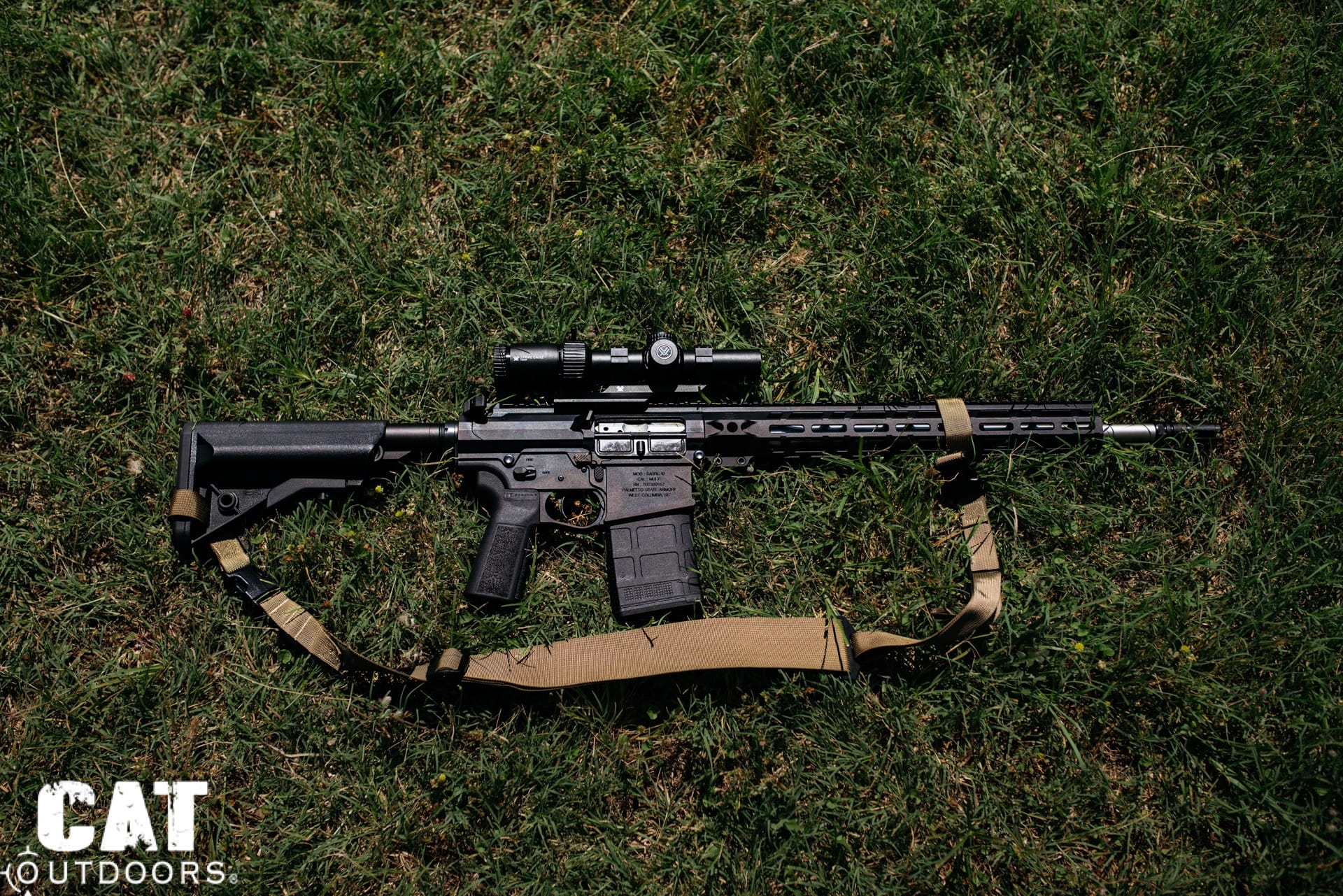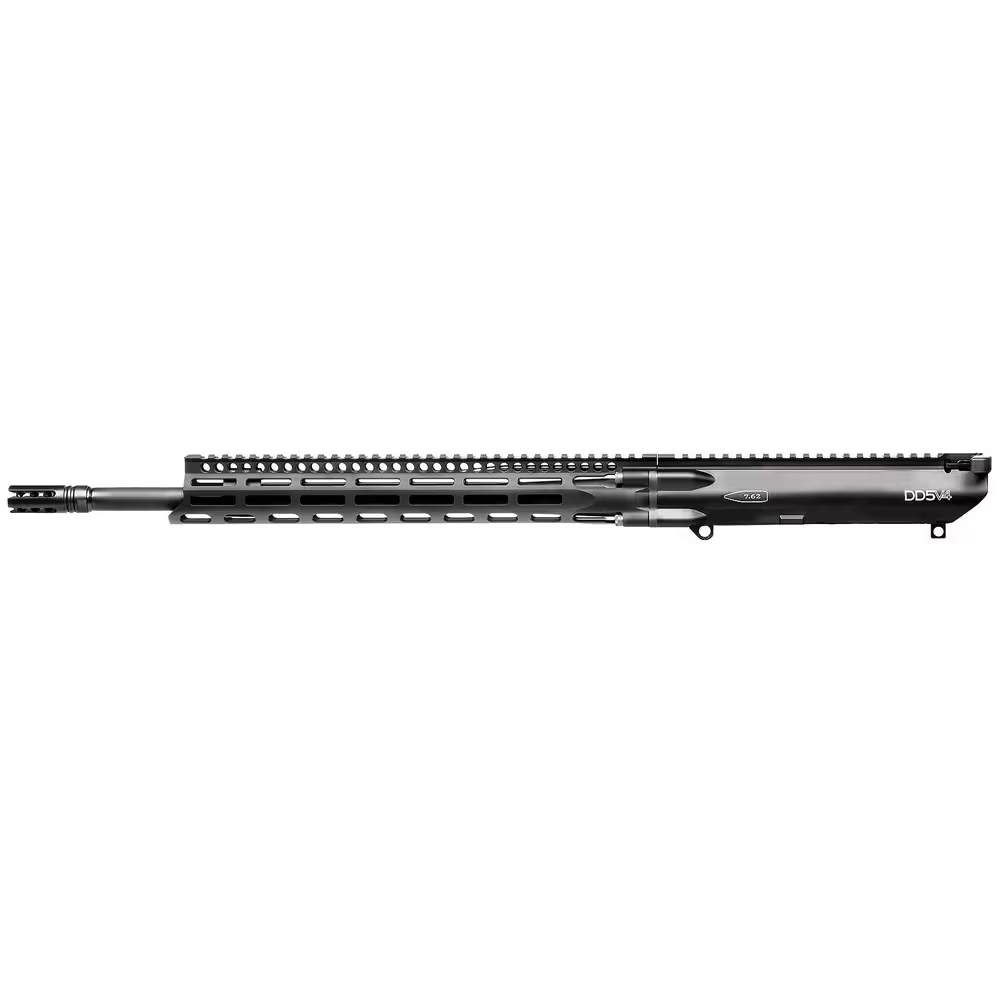7 Best AR-10 Upper Receivers [2025]
Ready to graduate from .223 and step into a big-bore .308?
Building or upgrading an AR-10 means more power, more reach, and yes, more decisions. Done right, it’s one of the smartest ways to bring .308 or 6.5 Creedmoor into your lineup without draining the bank account.

With so many choices out there, finding the best AR-10 upper receivers can feel like navigating a maze of specs, patterns, and compatibility quirks. You’ve probably already learned that an AR-10 isn’t just a bigger AR-15—it’s a platform without a single standard.
Get it right and you’ll enjoy a smooth-shooting .308 that punches paper or game at 600 yards. Get it wrong and you’ll end up with a pile of mismatched parts and an expensive lesson in what not to do.
We’ve tested dozens of AR-10 uppers, and below are our recommendations for the best AR-10 upper receivers. We selected these picks based on their performance on the range, feature set, compatilibility, and availability.
For more options, look at our lists of the best AR-10s, the best AR-10 lowers, and the best AR-15s.
Lock and load…
1. BEST AR-10 UPPER: Aero Precision M5E1 Enhanced Upper (DPMS High‑Rail)
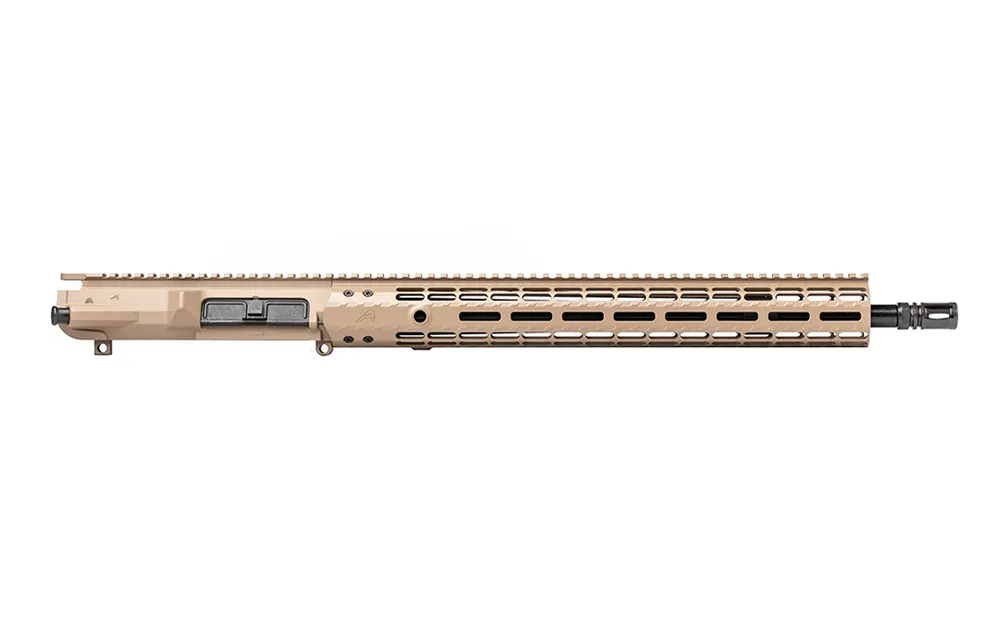
Aero Precision M5E1 Enhanced Upper
AR15 Discounts (See Price)
Classic Firearms (See Price)
GrabAGun (See Price)
Brownells (See Price)
Guns.com (See Price)
Sportsman’s Warehouse (See Price)
Aero Precision cut its teeth machining AR‑15 parts, and the M5E1 Enhanced upper shows they haven’t lost a step in the large‑frame world.
Rather than fighting with a separate barrel nut and handguard, the M5E1 uses an integrated system: you torque a single barrel nut once, slide the handguard over it and lock it down with eight Torx screws. That level of simplicity alone makes this upper the go‑to starting point for countless LR‑308 builds.
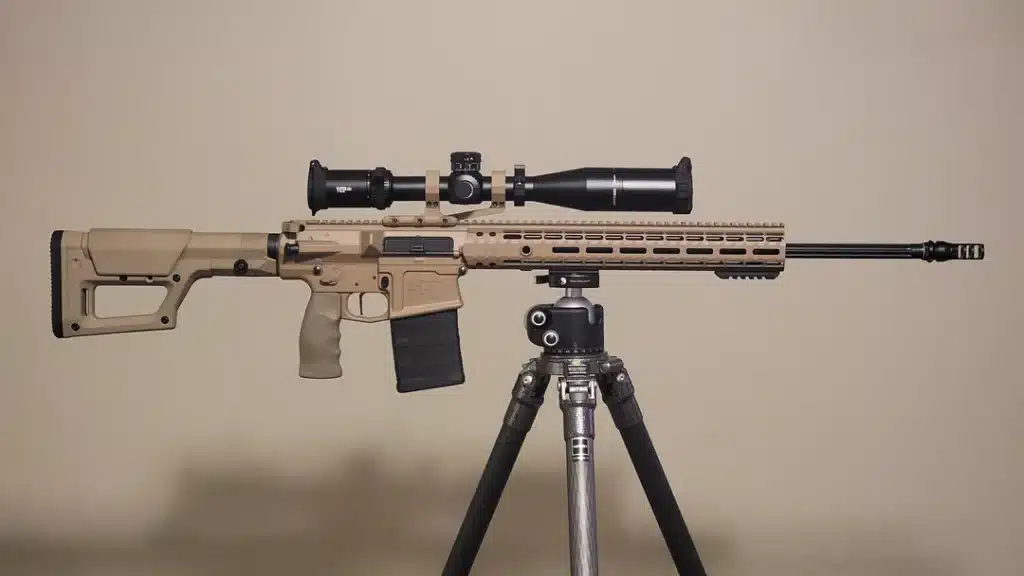
What We Like: Stress‑free assembly. If you’ve ever timed a barrel nut only to discover your gas tube won’t line up, Aero’s design feels like a revelation. With the M5E1, you tighten the integrated nut, slide on the handguard, and tighten it down.
There’s no shim stack or gas‑tube alignment to fuss over, and the result is a stiff, free‑floated rail that stays put even under rapid strings of fire.

We also like the suppressor-friendly clearance. The handguard’s 1.78″ internal diameter swallows most over‑barrel suppressors and bull barrels. We’ve used this upper with .308 and 6.5 Creedmoor barrels and had no issues clearing suppressors or heavy profiles.
Multiple M‑Lok handguard lengths (from 12 to 20 inches) mean you can build anything from a compact hunting rifle to a long‑range match gun without changing receivers.
The integrated barrel nut is slightly oversized, spreading clamping force more evenly across the barrel extension and helping with heat dissipation during rapid fire. When paired with an Aero M5 lower, the tensioning screw eliminates any receiver wobble, making the rifle feel like a monolithic block.
Clean machining and broad compatibility. Aero forges the receiver from 7075‑T6 aluminum, adds M4 feed ramps and flares the ejection port. Machining is crisp, anodizing is even and there are no burrs or sharp edges.
Because it uses the DPMS high‑rail pattern, it will mate with most LR‑308 lowers and accept standard DPMS bolts. Want to convert your .308 into a 6.5 Creedmoor down the road? Swap barrels and you’re good to go.

Flaws but Not Dealbreakers: You need to supply your own BCG and charging handle. Aero sells the M5E1 stripped or “complete” without a bolt carrier group or charging handle. Quality components will add another $200–$300 to your build, so budget accordingly.
Aero uses a proprietary handguard interface. The integrated nut system is slick, but if you want to run a third‑party handguard, you’ll need to swap the barrel nut to a standard DPMS one. Aero sells replacement nuts, but it’s an extra step.
The CMV barrels are robust, but not as corrosion-resistant as 416R stainless options. While the QPQ finish holds up well to round counts that would rust out untreated steel, if you’re a serious precision shooter, you might want to upgrade to a stainless barrel eventually.
Bottom Line: The M5E1 Enhanced upper sits at the sweet spot of quality, price, and flexibility. It’s DPMS high-rail compatible, easy to assemble, and ready for anything from range fun to hunting to competition. If you’re looking for one upper to anchor a dependable AR-10 build, Aero’s M5E1 is our all-around pick.
2. BEST BUDGET-FRIENDLY AR-10 UPPER: PSA Gen 3 PA10 20″ Complete Upper (DPMS High‑Rail)

PSA Gen 3 PA10 20″ Complete Upper
Palmetto State Armory built its business on delivering rifles that punch above their price point. The Gen 3 PA10 continues that trend.
This 20‑inch upper ships ready to shoot, complete with a 4150V chrome‑moly barrel, nitride finish, mid‑length gas system and a full BCG and charging handle – all for what many brands charge for a stripped receiver.
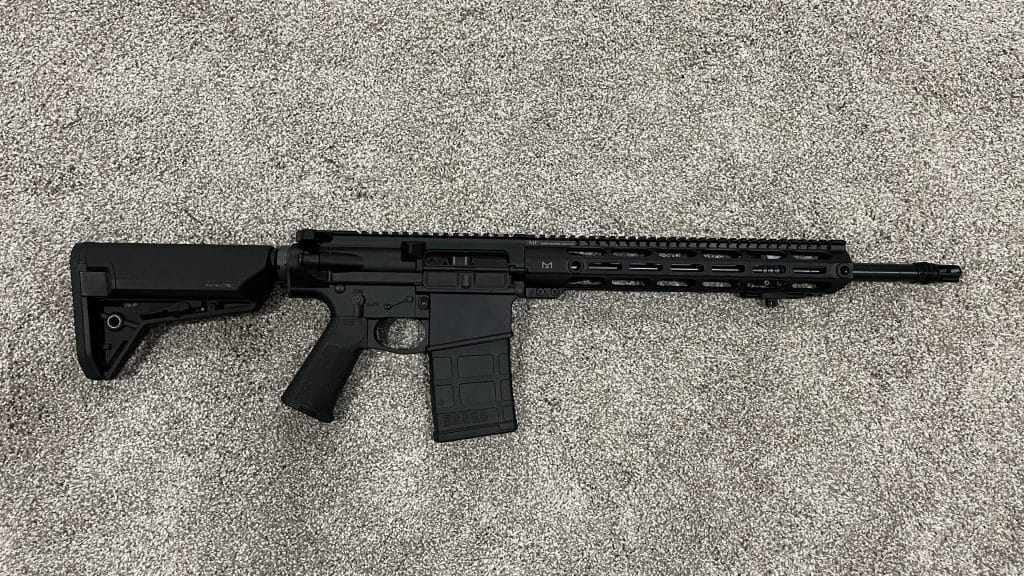
What We Like: For budget builders or those wanting a second caliber, the PA10 offers a plug‑and‑play solution. The included Carpenter 158 bolt and properly staked gas key save you the cost (and guesswork) of sourcing a reliable BCG separately.
Our test upper consistently printed 1.5–2 MOA with decent ammunition. PSA reworked the gas port sizes and bolt geometry on this generation, smoothing out cycling. The nitride finish resists corrosion and wipes clean easily, and the mid‑length gas system softens recoil without compromising reliability.
Because it uses the DPMS high‑rail spec, this upper plays nicely with a huge aftermarket of lowers, bolts and handguards. PSA also offers 6.5 Creedmoor versions that drop onto the same lower, letting you convert from hunting to long‑range by swapping uppers.
Flaws but Not Dealbreakers: It can be rough around the edges. You’ll occasionally find tool marks or slightly uneven anodizing on PSA parts. The included handguard is perfectly functional, but lacks the rigidity and finish of pricier rails.
Also, this is not a match gun. The 4150 barrel is durable and accurate enough for most users, but precision shooters seeking sub‑MOA out of the box may prefer a stainless option. Likewise, the basic muzzle device works, but you’ll likely replace it.
Lastly, the gas tuning can vary. While our sample ran well, some batches are slightly over‑gassed. A heavier buffer or adjustable gas block solves the issue if you experience brisk recoil.
Bottom Line: The Gen 3 PA10 proves you don’t need deep pockets to enjoy a reliable AR‑10. It’s a complete, ready‑to‑shoot upper that leaves plenty of room in your budget for optics and ammo. If this is your first foray into .308 or as a spare caliber for your LR‑308, it’s hard to beat the value here.
3. BEST VALUE UPGRADE: PSA Sabre-10 Series Upper (DPMS High‑Rail)
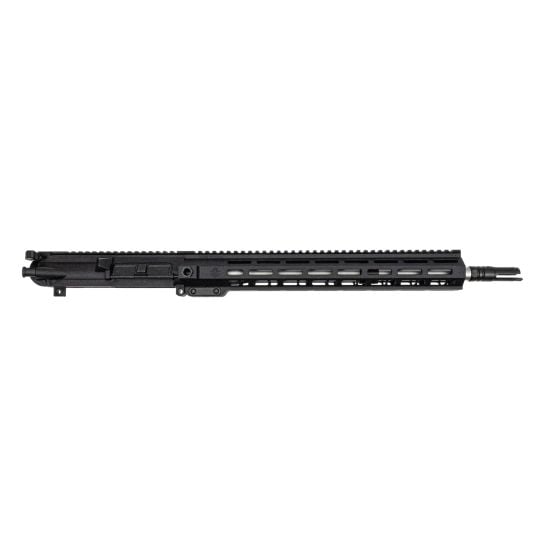
PSA Sabre-10 Series Upper
Want to step up from a budget build without jumping straight into boutique territory? PSA’s Sabre Series was created for shooters who want premium components at a mid‑range price.
Sabre uppers are built from parts you’d normally spec yourself: barrels from FN or Ballistic Advantage, rails from Midwest Industries or similar, Radian Raptor charging handles, and nitride or NiB‑coated bolt carrier groups, etc.
PSA packages those parts into a complete upper and sells it for less than sourcing everything individually. There’s a number of different options available, so be sure to look around.
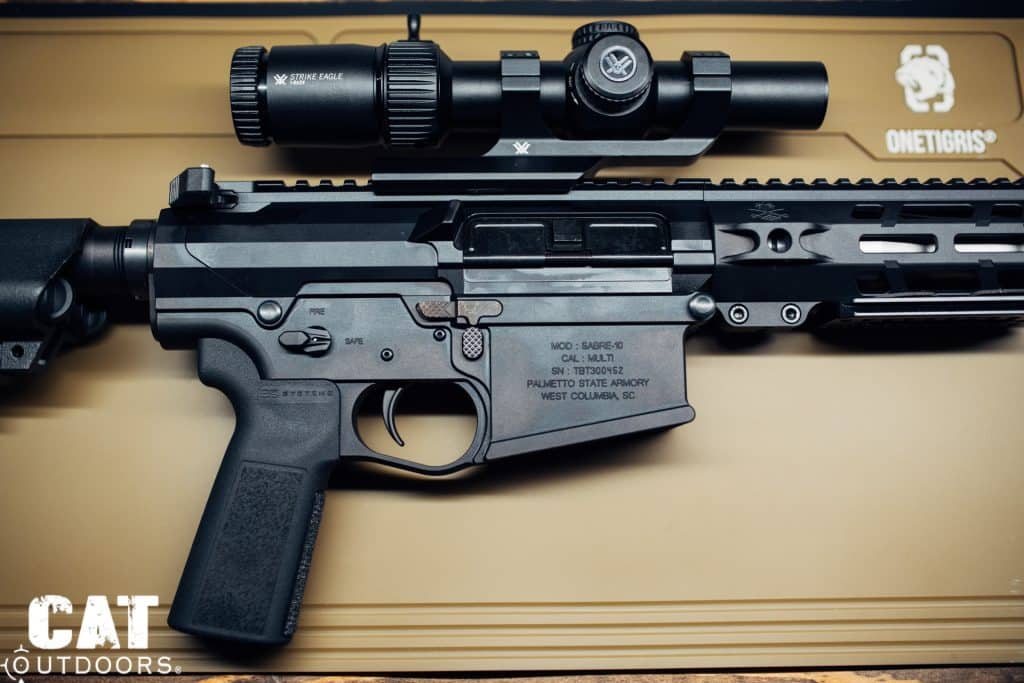
What We Like: This isn’t a parts‑bin build – PSA cherry‑picks name‑brand barrels and handguards. You’ll want to shop around on their site though. Some of the complete Sabre-10s offer the best gear.
Tight chambers, proper twist rates and high‑quality gas blocks mean these uppers shoot better than their price suggests. Many users report sub‑MOA groups with match ammo.

This curated parts approach shows in performance and build quality. The premium nitrided or NiB-coated bolt carrier groups cycle smoother and clean easier than standard options. Gas blocks are often low-profile and sometimes adjustable, allowing fine-tuning for suppressed shooting or different ammunition.
It’s loaded with extras. Sabre uppers often include adjustable or gas‑busting charging handles, low‑profile (sometimes adjustable) gas blocks and pinned muzzle devices to hit the 16‑inch legal length without NFA paperwork. The fit between upper and lower is snug, and the bolt carrier groups are slickly coated for easier cleanup.

Despite the premium parts, the Sabre sticks to the DPMS high‑rail spec, so you can drop it on your existing LR‑308 lower. Barrel lengths from 13.7″ to 20″ let you tailor the rifle for home defense, general purpose, or long‑range work.
More AR Content: Best AR-15 Suppressors, Best AR-15 Triggers, Best AR-15 Barrels
Essentially, what we like about these uppers is that PSA does the shopping for you—instead of researching and sourcing individual premium components at retail prices, the Sabre delivers a curated blend of high-value parts at a package price that undercuts piecing together the same build yourself.
Flaws but Not Dealbreakers: PSA sources parts from multiple suppliers, so you might notice slight differences in anodizing shade between the upper, handguard and other components. Functionally they mesh, but it might bother detail‑oriented builders.
The uppers can also be over‑gassed. The shortest 13.7‑inch variants have been reported to run hot with suppressors; a heavier buffer or adjustable gas key alleviates it. Longer barrels aren’t as sensitive.
Sabre uppers are essentially small batches of premium parts. When a configuration sells out, you may have to wait for the next production run or pick a different length.
Bottom Line: PSA’s Sabre Series bridges the gap between entry‑level and custom builds. You get top‑shelf barrels, modern handguards and refined components in a DPMS‑compatible package for hundreds less than sourcing those parts yourself. If you want more than the basics without paying boutique prices, this is the sweet spot.
4. BEST MONOLITHIC RAIL: LMT MRP‑H .308 Upper (SR‑25)
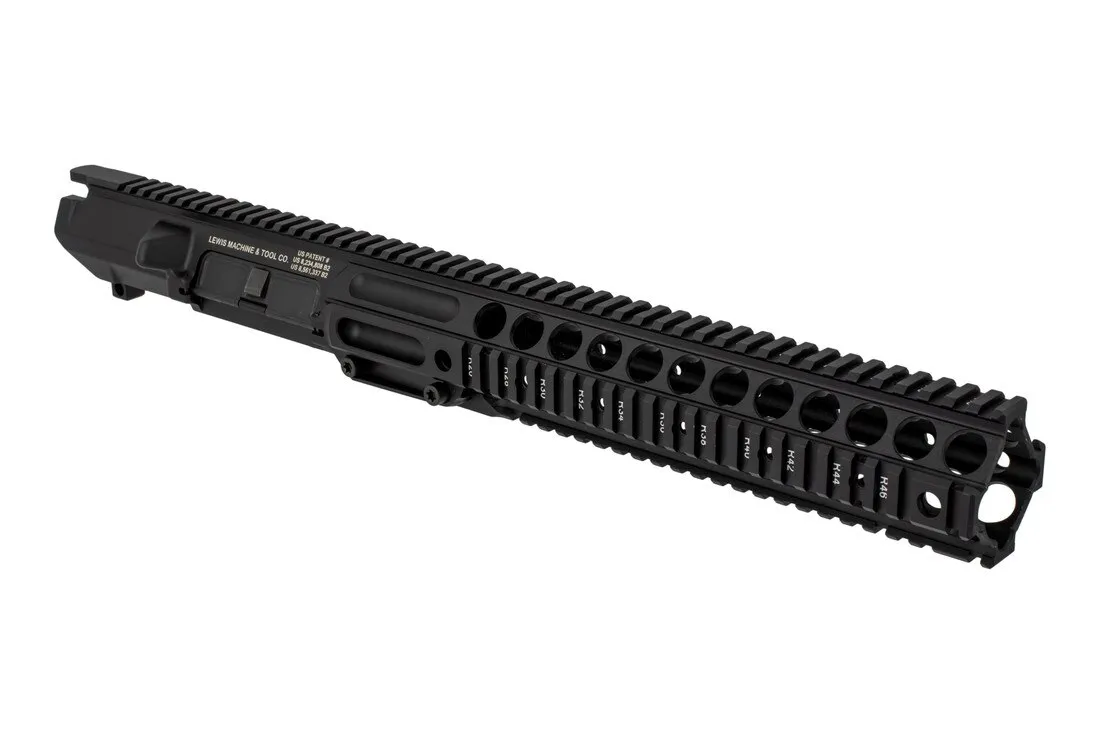
LMT MRP-H .308 Upper Receiver
When longtime competition favorites like the Armalite A‑Series and JP PSC‑19 vanished from shelves, seasoned 3‑Gunners and precision shooters turned to Lewis Machine & Tool’s MRP‑H MWS upper. The Monolithic Rail Platform Heavy (MRP‑H) is the only AR‑10 upper that integrates the handguard and receiver into a single forged piece.
That monolithic design, combined with LMT’s quick‑swap barrel system, yields exceptional rigidity, repeatable point‑of‑impact, and the ability to tailor your rifle to different stages or calibers in minutes.

What We Like: The MRP‑H upper is CNC‑machined from a single block of aerospace aluminum, so the handguard and receiver are one continuous unit. Because your optic mounts directly to this monolithic rail, there’s no flex or shift under bipod load or barricade pressure.
Integrating the handguard also means there’s no barrel nut to work loose mid‑match – a peace‑of‑mind advantage you can feel when you’re hammering through a stage.
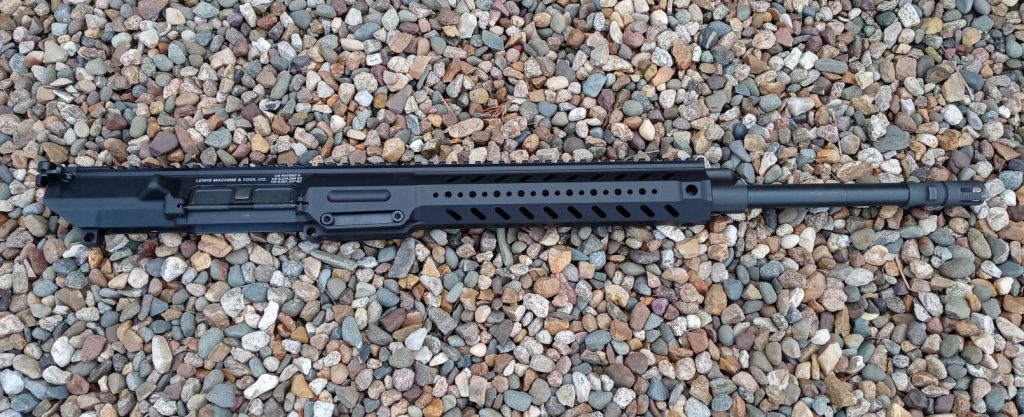
We also like the quick‑change barrel system. LMT’s proprietary locking system uses two captive bolts to secure the barrel to the receiver. Swapping barrels or calibers takes just a Torx wrench and a few minutes; you can go from a lightweight 16″ 7.62 barrel to a heavy 20″ 6.5 Creedmoor tube without disturbing your optic.
For competitors who shoot multiple divisions or tailor their rifle to specific courses of fire, this modularity is invaluable.
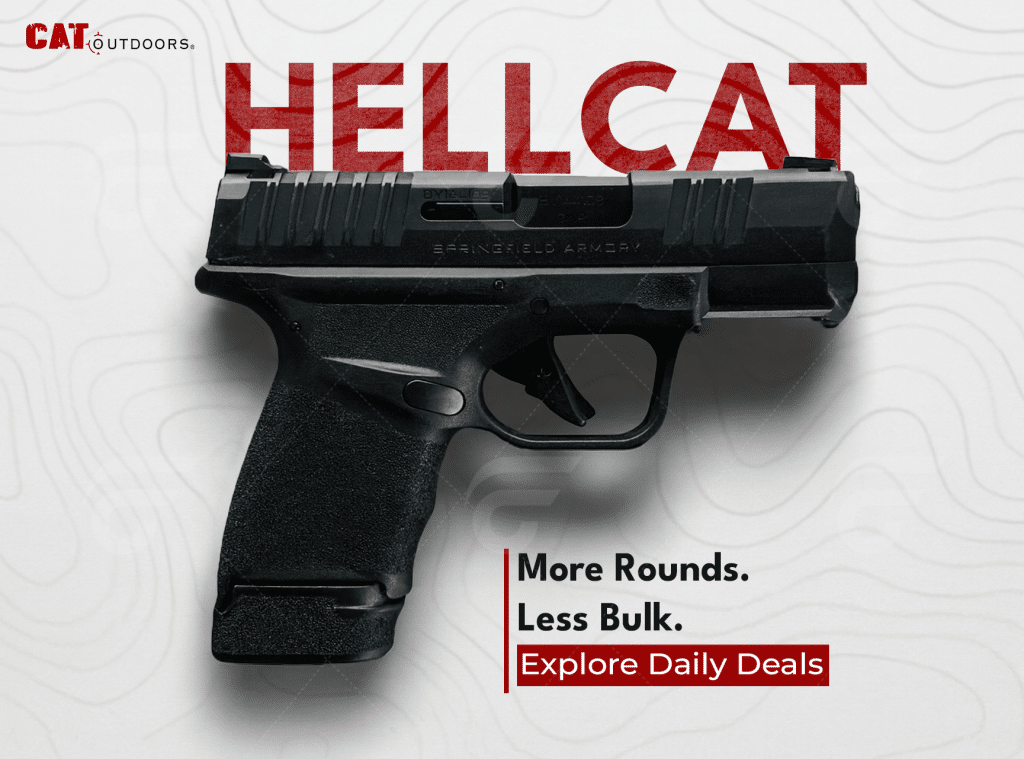
Flaws but Not Dealbreakers: Unless you’re buying a complete rifle, you have to piece everything together – the upper, barrel, BCG, charging handle – everything.
Shopping for LMT parts can be kind of confusing. They’ve had some puzzling terminology changes over the years. Here’s a quick glossary of their acronyms:
- MWS = Modular Weapon System (Descriptor of LMT’s AR10 platform)
- MRP = Monolithic Rail Platform (i.e. one-piece upper. LMT Proprietary)
- MRP-L = Monolithic Rail Platform LIGHT (i.e. AR-15 compatibility, fewer carbs, zero sugar, less filling)
- MRP-H = Monolithic Rail Platform HEAVY (i.e. AR-10 & KAC SR25 compatibility)
- M.A.R.S. = Modular Ambidextrous Rifle System (Descriptor of LOWER RECEIVER only. LMT MARS & LMT Defender lower receivers (both L & H) will work with any of their respective upper receivers)
To top it off, this upper is pricey and heavy. The MRP‑H Top End runs north of $2,400 and tips the scales heavier than many competitors. The monolithic rail and quick‑change barrel interface add mass, and your wallet will feel the weight, too.
This particular URG uses a proprietary ecosystem. While it uses SR‑25 pattern bolts and magazines, the barrel interface is unique to LMT. You’re limited to LMT MWS barrels and the mating lowers (MWS/MARS‑H) for proper fit.
Aftermarket handguards aren’t an option, and you can’t drop this onto a DPMS or Armalite lower. That said, staying within the LMT ecosystem ensures everything works as designed.
Bottom Line: For competitors seeking a bomb‑proof, match‑grade AR‑10 upper that can be reconfigured for different stages or calibers, the LMT MRP‑H Upper is the go‑to option. Its one‑piece construction, quick‑change barrel system, and high‑quality components deliver the rigidity and precision you need to dominate long‑range and practical rifle competitions. It’s expensive and proprietary, but its performance and adaptability justify the investment for serious shooters.
5. BEST FOR LONG-RANGE: Ballistic Advantage 22″ 6.5 Creedmoor Upper (DPMS High‑Rail)

Ballistic Advantage 22″ 6.5 Creedmoor Upper
Primary Arms (See Price)
AR15 Discounts (See Price)
GrabAGun (See Price)
Brownells (See Price)
Classic Firearms (See Price)
When your mission is clanging steel past 800 yards, cartridge selection matters. The 6.5 Creedmoor offers flatter trajectories and better long‑range ballistics than .308, and Ballistic Advantage’s 22‑inch upper is purpose‑built to exploit those advantages.
The upper pairs a 416R stainless match barrel with a rifle‑length gas system and DPMS compatibility. You can order the receiver bare or add a nickel‑boron BCG and gas‑busting PRI charging handle for a complete kit.
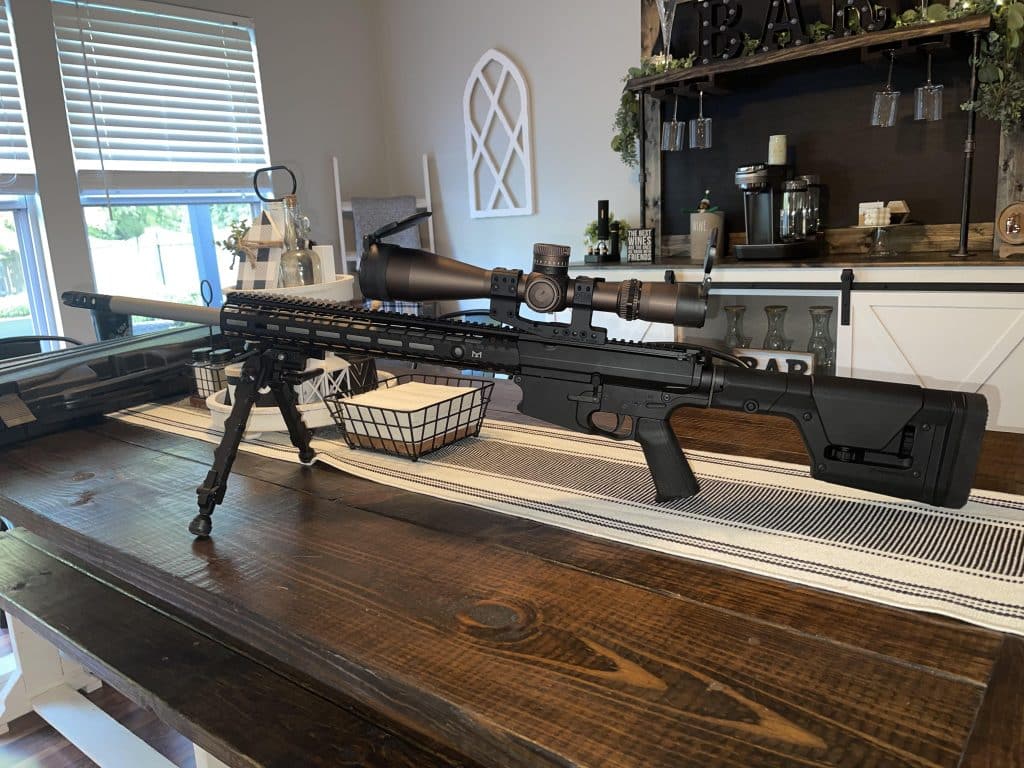
What We Like: The match‑grade barrel. Ballistic Advantage hand‑laps its stainless barrels, and it shows. Our test upper regularly produced sub‑MOA groups with 140‑grain match ammo.
The 22″ length squeezes every last fps out of Creedmoor while remaining manageable, and the rifle‑length gas system softens recoil into a gentle push.
With this upper, you can tell the attention to detail. Gas blocks are pinned to prevent drift, each barrel nut is torqued consistently for proper headspace and the M‑Lok handguard offers ample real estate for bipods, night vision, or weights. Being owned by Aero Precision means the upper, ejection port cover and forward assist all benefit from Aero’s excellent machining.
In our testing, this upper kept 140‑grain bullets supersonic past 1,200 yards, letting us spot impacts at distances that leave .308 subsonic. For PRS gas‑gun matches or open‑country hunting, the combination of velocity and ballistic coefficient is hard to beat.
Flaws but Not Dealbreakers: If you’re shopping around, the only thing you might find at the big name retailers is the barrel. If you want the complete upper, you’ll need to pick it up from Ballistic Advantage directly.
A 22‑inch barrel with rifle‑length gas system isn’t ideal for run‑and‑gun scenarios. It’s heavy and long, better suited to prone or supported shooting. Offhand, the nose feels weighty; a sturdy bipod solves this, but isn’t always practical in the field.
No BCG or charging handle by default. Adding a good BCG and gas‑busting handle bumps up the cost, though Ballistic Advantage offers them as bundles. It also means you can tailor the bolt carrier finish and handle to your preferences.
This upper is optimized for 6.5 Creedmoor. Switching to .308 may require changing gas block settings or components to prevent under‑ or over‑gassing.
Bottom Line: For shooters stretching a semi‑auto to bolt‑gun distances, Ballistic Advantage’s 6.5 Creedmoor upper delivers. The match barrel with its smooth recoil and DPMS compatibility make it a superb choice for PRS gas‑gun matches or long‑range hunting. Just be prepared for the additional length and weight.
6. BEST FOR HUNTING: Stag Arms 10 Marksman Upper (DPMS High‑Rail)
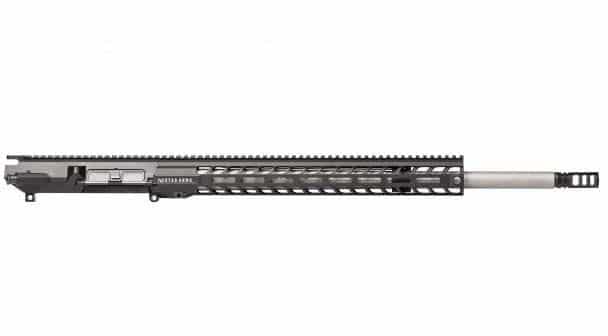
Stag Arms 10 Marksman Upper
Sportsman’s Warehouse (See Price)
Guns.com (See Price)
Midway USA (See Price)
Classic Firearms (See Price)
BattleHawk Armory (See Price)
Stag Arms has long been known for reliable AR‑15s; the Stag 10 Marksman upper brings that experience to the large‑frame platform. Built around a 22‑inch fluted barrel (offered in .308 Win or 6.5 Creedmoor) with a rifle‑length gas system, the Marksman caters to hunters and precision shooters who want one rifle to do a bit of everything.
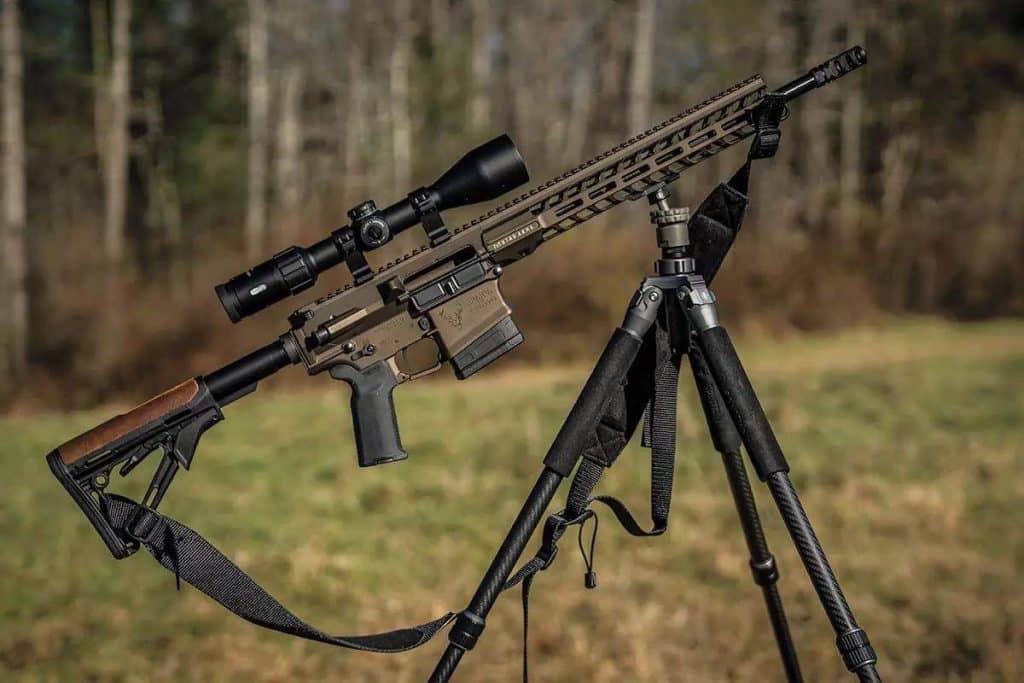
What We Like: This Stag upper has great balance of reach and versatility. The 22″ fluted barrel delivers excellent velocity and heat dissipation without tipping the scales like a full bull barrel.
In our testing, the Marksman printed 1‑MOA groups with quality hunting ammunition and kept 6.5 Creedmoor bullets supersonic past 1,000 yards. The fluting cuts weight and aids cooling for long shot strings.
You also have left‑handed options and DPMS compatibility, Stag stands out by offering mirror‑image uppers for southpaws, complete with left‑ejecting bolts.
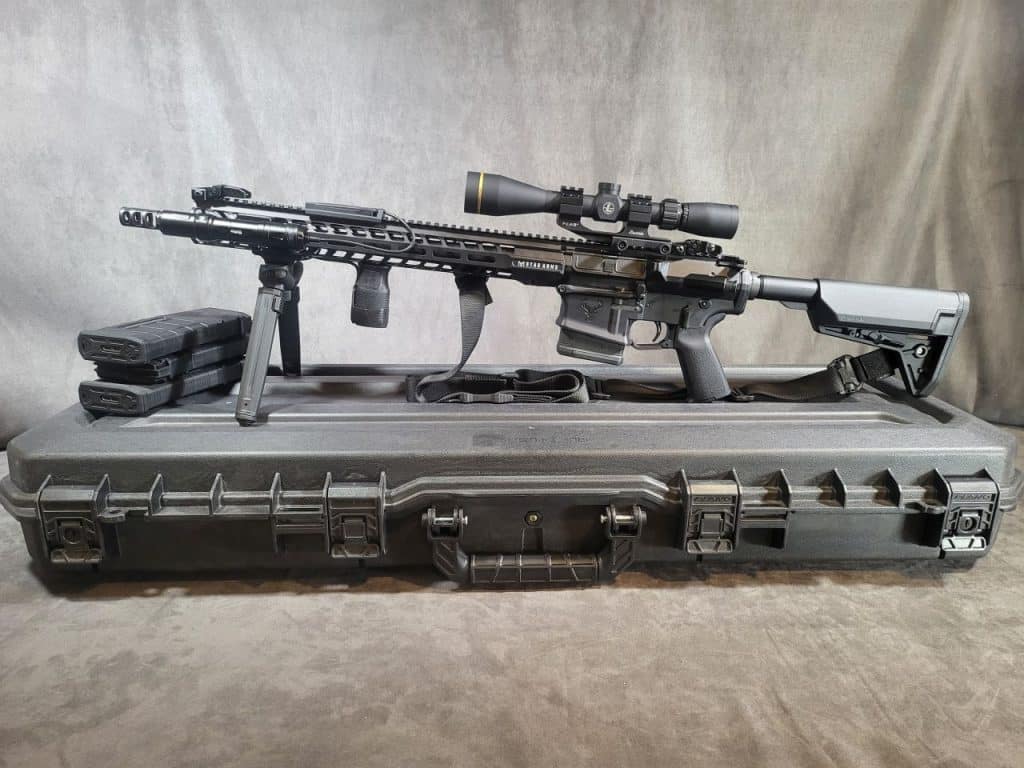
It also sticks to the DPMS high‑rail pattern, so you can swap barrels or handguards using widely available LR‑308 parts. The stripped uppers share barrel‑nut threads with DPMS, making caliber changes straightforward.
The heavy barrel is dimpled at the gas port for secure block mounting, and the handguard uses anti‑rotation tabs. Complete rifles include a Magpul PRS Gen 3 stock and a crisp two‑stage trigger, features hunters appreciate when shooting from the sticks or a blind. A lifetime transferable warranty backs the upper for peace of mind.
Flaws but Not Dealbreakers: At 22 inches, the barrel makes the rifle front‑heavy and less maneuverable in dense brush. If you primarily hunt in thick timber, consider a 16″ or 18″ option. The two‑stage trigger and adjustable stock add weight, which is great for precision, less ideal for hikes.
They also have limited availability. Stag’s uppers aren’t as ubiquitous as PSA’s; you may need to wait for a restock or buy a complete rifle and split it. Left‑handed versions can be even harder to find.
While the Marksman bridges hunting and precision shooting well, its heavy barrel and rifle‑length gas system are overkill for home defense or run‑and‑gun competition. Know your priorities before choosing this as your only upper.
Bottom Line: The Stag 10 Marksman upper is a do‑everything workhorse for hunters and precision shooters. The 22″ fluted barrel, DPMS compatibility, and optional left‑handed configuration make it versatile. If you need a single upper that can handle deer season, target practice and the occasional PRS match, the Marksman is an excellent choice.
7. HONORABLE MENTION: Daniel Defense DD5 V4
Daniel Defense’s DD5 line has been the flagship of their large‑frame rifles for years, and for good reason. Rather than cloning the DPMS or Armalite patterns, the DD5 uses a proprietary 4‑Bolt connection system that clamps the barrel and handguard directly to the receiver. This design increases the surface area between barrel and receiver for outstanding rigidity and accuracy, and it free‑floats the barrel without relying on a traditional barrel nut.
The DD5 also packs a user‑adjustable gas block with suppressed and unsuppressed settings, a DLC‑coated bolt carrier with an integrated recoil buffer, and ambidextrous controls from the safety to the Grip‑N‑Rip charging handle.

The reason we only list it as an honorable mention is that it is only compatible with DD5 proprietary lowers. Essentially, you’re locked into buying the Daniel Defense lower.
What We Like: The rock‑solid 4‑Bolt connection. Unlike standard AR‑10s that rely on a threaded barrel nut, the DD5’s innovative 4‑Bolt system ties the handguard and barrel to the upper receiver.
This feature increases contact area for improved accuracy and ensures the barrel is truly free‑floated, resulting in bolt‑gun‑like performance.
With that kind of precision, you should be able to achieve 0.6-0.8 MOA groups.
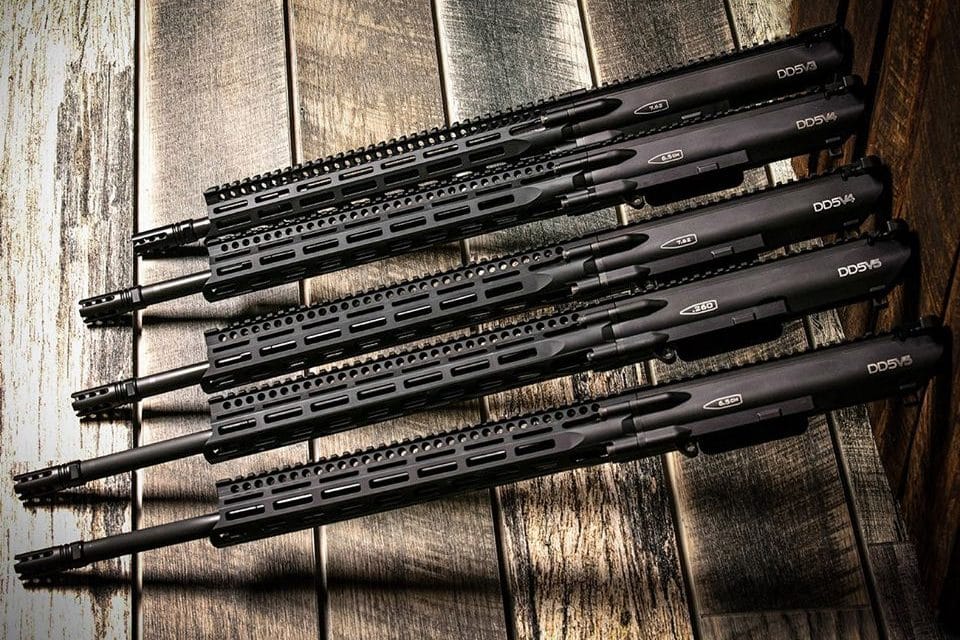
The DD5’s 4140 steel gas block has settings for suppressed and unsuppressed fire. A 90‑degree twist with the included Allen key tunes the system to your ammo or suppressor. The DD5’s user‑adjustable gas block is pinned in place and paired with Daniel Defense’s Superior Suppression Device muzzle brake.
Pinning the block keeps it from drifting under heat; the muzzle device tames recoil and flash without punishing your ears. These small details help the rifle run smoothly whether you’re blasting hogs or ringing steel.
Learn More: How to Clean an AR-15, 4 Rules of Gun Safety, Buying Your First AR
There’s a few other things to like here: the DLC-coated carrier, full ambi controls, Grip-N-Rip charging handle, and CHF barrel. The weighted buffer built into the carrier smooths cycling and the DLC finish makes cleanup easy. The bolt design improves reliability and longevity over standard DPMS parts.
Flaws but Not Dealbreakers: Like we said before, the 4‑Bolt connection system means you can’t swap handguards or barrels with off‑the‑shelf DPMS or Armalite parts. While the DD5 accepts SR‑25 magazines, you’re locked into Daniel Defense barrels and rails. This isn’t a tinker‑friendly platform.
At a street price of about $1,930, you’re paying for Daniel Defense’s craftsmanship, proprietary design and match‑grade accuracy. For shooters on a tight budget, other options deliver adequate performance for less.
The S2W barrels and upper add weight; even the 18″ version tips the scales around 8.6 pounds for a complete rifle. Offhand stages in competition will feel more taxing compared to lighter barrels. However, that mass contributes to excellent recoil control.
Bottom Line: If you want a turn‑key, match‑grade AR‑10 upper that puts precision and reliability above all else, the Daniel Defense DD5 V4 sits at the top of the heap. Its 4‑Bolt connection, adjustable gas system, ambi controls and cold hammer forged barrel deliver sub‑MOA accuracy and flawless function. It’s pricey and proprietary, but for those who demand the best and don’t mind the weight, the DD5 is a solid pick.
Understanding AR-10 Patterns: DPMS vs Armalite
If you’re coming from the AR‑15 world, there’s one big caveat: there’s no single AR‑10 “mil‑spec.” Unlike the AR‑15, the AR‑10 platform never standardized on one pattern. Most receivers fall into DPMS (a.k.a. LR‑308) or Armalite patterns.
The cuts on the rear of the upper and lower receivers are different, barrel nuts are different, even the bolts and magazine catches can vary. Get it wrong and your parts won’t even mate together.

Armalite Pattern
The original AR‑10 from the 1950s features an angular cut where the upper meets the buffer tube. Most Armalite‑pattern uppers use proprietary barrel nuts, bolt‑carrier groups, and handguards. Aftermarket support is smaller, but some shooters swear by Armalite’s robust build quality.
DPMS Pattern
DPMS is far more common today and comes in two rail heights (high and low). DPMS uppers have a rounded contour near the buffer tube and enjoy a huge aftermarket; most modern AR‑10 uppers, handguards, and bolts follow this spec.
The trick is matching rail height with handguard: a high‑rail upper needs a high‑profile handguard, and the same goes for low‑rail versions.
Why You Should Care
Uppers and lowers must share the same pattern to mate correctly.
DPMS is like building with LEGO – you’ve got thousands of pieces and endless configurations. Armalite is like assembling a vintage kit car – you’ll get a unique ride, but only if you can source the right parts.
Mixing DPMS and Armalite parts is a non-starter. Barrel nuts, carriers, and even charging handles won’t line up. Understanding this before you click “buy” will save you time, money, and the headache of incompatible components.
FINAL THOUGHTS ON THE BEST AR-10 UPPER RECEIVERS
There you have our breakdown of the best uppers for helping you build your dream AR-10.
We think the Aero Precision M5E1 as the best all-around AR-10 upper. Its integrated barrel nut system, quality construction, and broad compatibility make it an excellent foundation for any .308 build.
Bargain hunters can’t go wrong with the plug‑and‑play PSA Gen 3 PA10, while the PSA Sabre‑10 steps up the parts quality without boutique pricing.
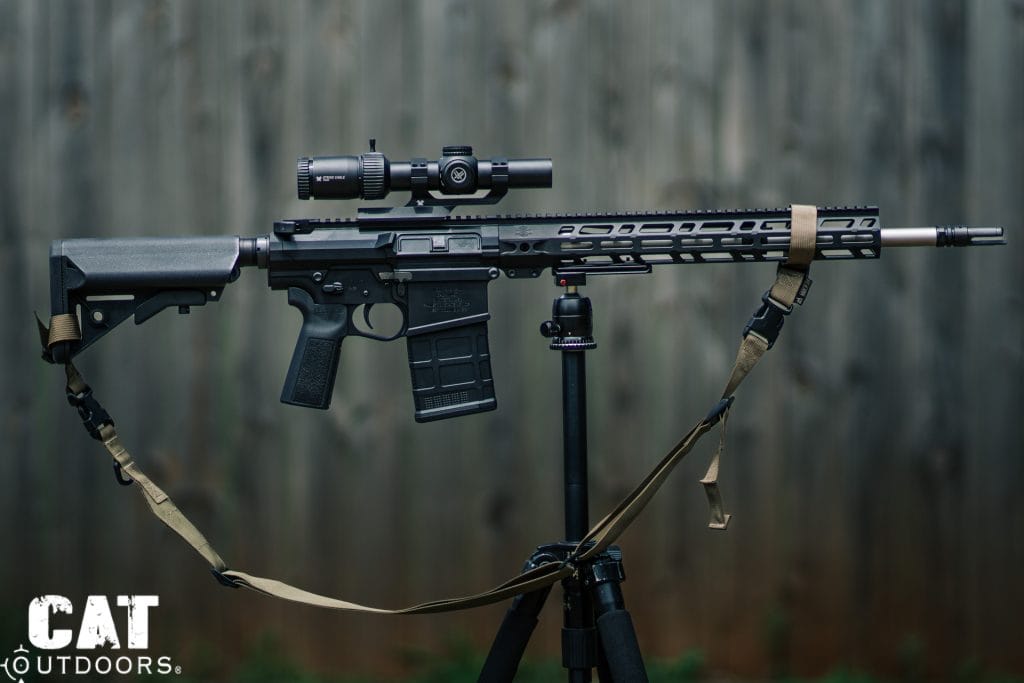
If you want the strength and rigidity of a one-piece system, the LMT MRP-H is the standout monolithic rail design.
If you want to stretch your gas gun past 1,000 yards, the Ballistic Advantage 6.5 Creedmoor upper provides match‑grade accuracy and smooth recoil.
Hunters and southpaws will appreciate the Stag 10 Marksman for its fluted barrel and left‑handed option. And although it locks you into the Daniel Defense ecosystem, the DDM5 V4 is a finely tuned machine that delivers sub‑MOA performance.
Pattern compatibility matters more than any other consideration in AR-10 builds. Verify that your upper and lower follow the same standard—DPMS or Armalite—before making any purchases. This single decision determines every other component choice and can save you significant frustration and expense.
What’s your experience with AR-10 uppers? Have you built with any of these options, or do you have other recommendations that didn’t make our list? Drop a comment below and share your build experiences—your insights help other builders make better decisions.

Justin Trump is the managing editor and owner of CAT Outdoors. The son of a Vietnam veteran, he’s a Certified Glock Armorer, an avid gun enthusiast and 2A advocate. He holds two firearm patents for the CAT M4 and Talon tools. When not managing CAT Outdoors, he enjoys spending time with his family and friends, rooting for Michigan sports teams, and serving his church.

